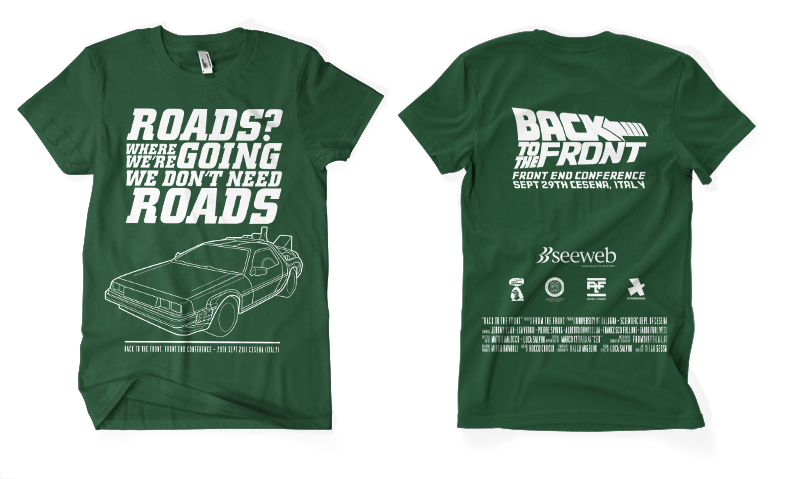
present
Cesena, Italy
A Free* event dedicated to front-end developers and designers.
One day packed with 6 talks, 3 workshops and 1 party
Get your Ticket now!









present

Cesena, Italy
A Free* event dedicated to front-end developers and designers.
One day packed with 6 talks, 3 workshops and 1 party
Get your Ticket now!









The range of devices accessing the web is increasing. We are faced with a choice in how we deal with this diversity. We can either fracture the web by designing a multitude of device-specific silos, or we can embrace the flexibility of the web and create experiences that can adapt to any device or browser.

By now most of you know how to use the popular new CSS3 features in your stylesheets, to embed custom fonts and easily create rounded corners, drop shadows, and scalable designs with media queries. However, below the surface, there are many other things that CSS3 brings and most web developers have never heard of. In this talk Lea will present many CSS3 features that are useful but underrated, as well as uncommon ways of utilizing the CSS3 features you already know about, in order to do much more with even less images and code.

There are many tricks to make your frontend faster. Reduce reflows, use web workers for big number crunching, use local variables rather than looking up the scope chain. We frontend people are in total control of these optimizations and they are easy to apply. But the most important performance optimizations lie somewhere in between the backend and the frontend. They have a lot to do with how the HTTP standard is specified. And they are often ignored, because neither backend people nor frontend people really feel concerned. In this talk we'll study parts of the HTTP standard and look how we can take action of this knowledge to massively speed up our web applications. If you haven't read Steve Souders first book «High Performance Web Sites», Pierre seriously urges you to go and listen to this talk!

Developing a software application is not only writing code. Delivering working code on-time and on-budget is not sufficient to beat the competition. And your product is no more just a piece of software. Agile and Domain Driven Design put continuous learning in the hot spot: How can we develop a better product? Can we do it fast? In this talk, Alberto Brandolini proposes that what is needed is a different approach encompassing all different aspects of product development, and specifically targeting learning at all levels.

Complex applications need a persistent database to store, search and join data: till now a dedicated server was needed to do this, and no offline usage of the app was possible. With the introduction of HTML5 and the concept of Web Databases, we don’t need an external server anymore: everything is stored within the user browser and thus the web app can be used offline as well as online.


Why are products like Instapaper and Readability so popular, and why minimalist layout designs are on the rise among the most followed webdesigners?
I think it’s not (just) a matter of putting ‘content first’. Neither it is (just) a matter of easily achievable responsiveness.
It’s rather about the users context, the users motivations, and their need for processing and understanding informations. Therefore, at the same time when books become digital, the Web looks at the traditional book as a legacy of rules and guidelines.
This workshop will explore the different aspects that must be considered to provide users with adequate digital reading experience, on the web as well as with ebooks.

Smartphones, tablets, gaming consoles, ebook readers and internet fridges are becoming our main tools to browse the web and yet websites are strictly made for a desktop consumption.
We need to develop a device agnostic approach and fully embrace the flexibility of the web with semantic coding and progressive enhancements.
During the workshop you will be guided to finding this new approach, discovering how it affects the entire process from content definition to user experience, from wireframing to coding.
A good knowledge of css and semantic html is required.

Javascript & browsers have been for years a complex and unsafe environment for a web developer, now we have the right tools to gain control on what we are distributing in our web applications. During the workshop you will learn first-hand basic Javascript Test Driven Development practices including testing, refactoring and related agile practices such as continuous integration and pair programming.
Program: an introduction to test driven development & continuous integration in js development; tests basics (unit vs functional and what’s worth testing in clientside development, mocking & stubbing, managing dependencies); development of a modular event driven application.
Requirements a medium knowledge of native javascript interface (you have to be able to write your own code).
Workshop will be lead in collaboration with Luca Lischetti @sirLisko

After the conference there will be time to drink something and to chat with speakers and other attendees

A limited edition t-shirt commemorating the conference will be hand printed next week for everyone that ordered it. We will take orders until wednesday 21th.
Hurry up!
Get the t-shirtSept. 29th
University of Bologna
Scientific dept. of Cesena - Italy
Via Sacchi 3
Cesena - Italy
Feeling guilty for not paying enough for such a great event? Worry not, you can always
Donate